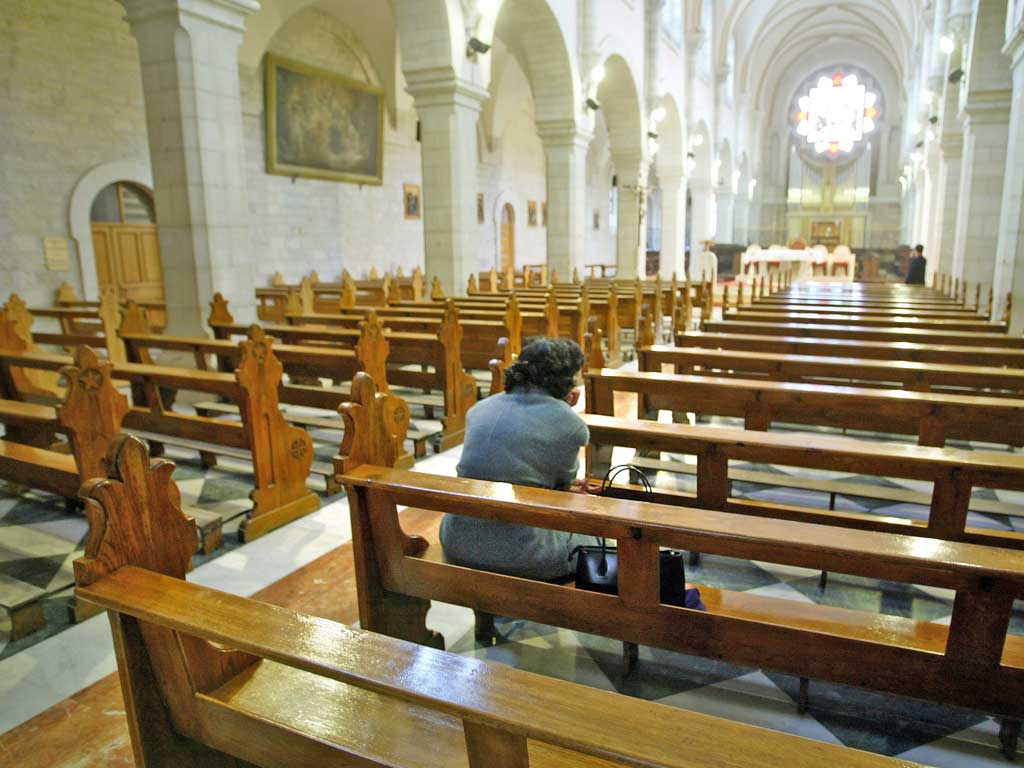The Church is being reborn in cafés and homes
New congregations are being created for the benefit of people who’ve never been to Church


Your support helps us to tell the story
From reproductive rights to climate change to Big Tech, The Independent is on the ground when the story is developing. Whether it's investigating the financials of Elon Musk's pro-Trump PAC or producing our latest documentary, 'The A Word', which shines a light on the American women fighting for reproductive rights, we know how important it is to parse out the facts from the messaging.
At such a critical moment in US history, we need reporters on the ground. Your donation allows us to keep sending journalists to speak to both sides of the story.
The Independent is trusted by Americans across the entire political spectrum. And unlike many other quality news outlets, we choose not to lock Americans out of our reporting and analysis with paywalls. We believe quality journalism should be available to everyone, paid for by those who can afford it.
Your support makes all the difference.Next Tuesday – Christmas Day – a lot of us will go to church.
Last year, a third of all adults attended a Christmas service, with the older generations more assiduous than the younger. That is a large number. And there is no reason to believe that the crowds of worshippers this year will be smaller. Yet last week the results from the 2011 Census showed that there had been a substantial decrease since 2001 in people who identify themselves as Christian. The proportion has fallen to just under 60 per cent.
In understanding these trends, the notion of “believing without belonging” that Professor Grace Davie, a sociologist at Exeter University, put forward a few years ago is helpful. In this context, believing is instinct or habit rather than ardent conviction. She acknowledged that churches in western Europe remained significant players but argued that they performed their moral and spiritual roles vicariously. People were content for churches to speak out on certain matters even though they rarely crossed their thresholds – except, to some extent, at Christmas.
If the “believing” part of Prof Davie’s dichotomy includes the latest census figure and Christmas attendance, it forms a bracket of 30 to 60 per cent of the population and is shrinking. The “belonging” proportion is very much smaller. The Church of England, which is the national church, by law established, with the Queen as its Supreme Governor, attracts about one million people to its 16,000 churches each Sunday. That is about 2 per cent of the English population. Adding in midweek attendance and the other Christian churches doesn’t get the proportion above 3 to 4 per cent. So “belonging” is about a tenth of “believing”.
Belonging has also been in long-term decline. For the past 30 years, the downward trend at Church of England services has been running at 1.3 per cent per annum. How serious this appears depends upon one’s viewpoint. In rural areas such as East Anglia, overbuilding of churches towards the end of the mediaeval period remains one reason why individual parish churches attract small numbers. The Diocese of Norwich, for instance, has 464 churches attracting an average congregation of 25. Seeing this, anyone would conclude that the Church was dying on its feet. On the other hand, the more successful churches in towns and suburbs can attract more than 400 worshippers each Sunday. Attending such a packed church, with a mix of ages and a lively service, one is inclined to wonder whether there is a problem at all.
This difficulty in forming a just view of trends in attendance meant that for many years not a lot of attention was paid to the relentless decline in active membership and to what it might eventually mean. The deterioration appeared glacial, just one person per annum from an average congregation of 80 people. Most bishops and clergy in the Church of England didn’t care to think about decline too much because it generated a sense of failure. And some theologians, too, tried to develop doctrines of fatalism.
Least understood of all was the “power of compounding” – how a small change repeated year after year becomes in due course very significant. And then if attention had also been paid to the high average age of church members – 61 years compared with the average adult age of the general population of 48 years – when 30 years ago there was no difference, it would have begun to become clear that the “dying on its feet” thesis was a clear and present danger.
During the past 10 years, however, this threat has finally been taken seriously after a long period of whistling in the dark. Bishops, clergy and concerned lay people in the Church of England are analysing areas where growth is taking place and assessing what can be learnt and applied more widely. While three out of five parishes have declining attendance, two out of five are growing. What explains their success? And while many dioceses have shrinking membership, there are seven that grew between 2001 and 2010, and they make an interesting list. Three urban areas – Newcastle, London and Southwark – and four rural areas – Hereford, Ely, Canterbury and York.
At the same time, a substantial church “planting” movement has developed, the title of which – “Fresh expression of church” – neatly captures its ethos. New congregations or churches are established that are different in ethos and style from the church that set them up because they aim to reach a different group of people. They are created primarily for the benefit of people who have never been to church. They may take place in cafés, at home, during the week rather than on Sundays; and sometimes they are led by pioneer priests or by trained youth workers.
They illustrate the words of William Temple, who was Archbishop of Canterbury during the Second World War: “The Church is the only society that exists for the benefit of those who are not its members.” If the Church of England were in need of a motto in an increasingly secular age, this would be a good one.
a.whittamsmith@independent.co.uk
Join our commenting forum
Join thought-provoking conversations, follow other Independent readers and see their replies
Comments